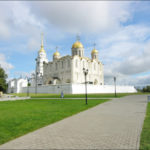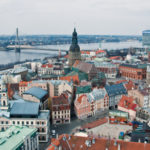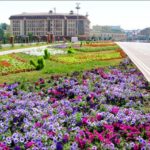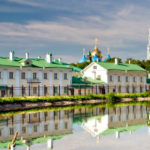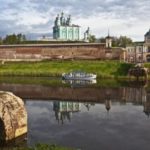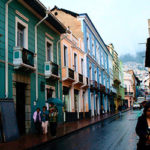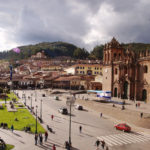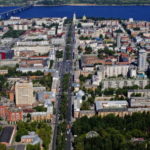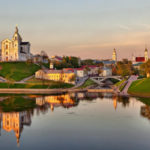Interesting facts about Suzdal
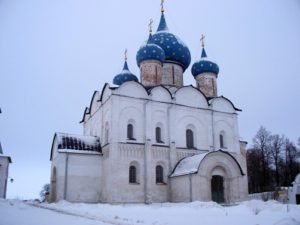 Suzdal is a small city, but extremely famous. Admiring the old days here come not only Russians, but also foreigners, and in the warm season the latter even prevail. Actually, tourism is the basis of the economy of modern Suzdal – in this city there are a huge number of ancient churches and temples, not to mention the Museum of Wooden Architecture.
Suzdal is a small city, but extremely famous. Admiring the old days here come not only Russians, but also foreigners, and in the warm season the latter even prevail. Actually, tourism is the basis of the economy of modern Suzdal – in this city there are a huge number of ancient churches and temples, not to mention the Museum of Wooden Architecture.
Suzdal in the 1970s of the last century was awarded the “Badge of Honor” as the largest tourist center, which became popular due to the careful preservation of cultural heritage.
Suzdal (more precisely, Suzhal) was first mentioned by the chronicler in 1024.
The name “Suzdal”, according to the generally accepted hypothesis, comes from the substantive form of the verb “zidzhu”, which means “formation.” It is also possible that the city owes its name to the verb “get it”, in translation from the Old Slavonic meaning, in particular, “sculpt from clay”.
In the middle of the XVII century, half the inhabitants of Suzdal were killed by the plague.
Suzdal takes 936 place from 1112 cities of Russia by the number of inhabitants.
Since 2002, the main Russian festival of cartoons has been held annually in Suzdal.
2010 in Suzdal also every year began to hold a festival at which the traditions of the Russian bath are celebrated.
On the second Saturday of July, residents of Suzdal traditionally celebrate the Cucumber Festival, which guests are offered to taste a variety of dishes from this vegetable.
Since the city lives mainly due to tourism, city factories more than 10 years ago united in a single organization called “Souvenir shop of Suzdal”.
Even in the times of Ancient Rus, Moscow, Yuryev-Polsky, Suzdal and Vladimir connected one of the oldest roads in the central part of Russia – Stromynka.
One of the most interesting places in Suzdal is the Museum of Wooden Architecture, where the buildings of the XVII-XIX centuries were taken from the entire Vladimir province. It is a real ancient village inside the modern city, which makes one believe in the existence of a time machine.
In Suzdal there is a four-story water tower built at the beginning of the last century. When the need for this structure has disappeared, the building was restored and placed inside a fashion store.
The snow-white Suzdal fire protection building with a tower was erected in 2004, but already has the status of a monument of architecture of regional importance – the fact is that for its construction drawings from the year 1890 from the local archive were used.
Suzdal for several hundred years was the capital of Russia, but then it turned into a provincial city subordinate to the Moscow principality.
In Suzdal, less than 10 thousand people live, but 53 churches are located on the territory of the city.
Spaso-Evfimiev Monastery in Suzdal was founded in the middle of the XIV century as a fortress for protection against external enemies. Today the monastery is famous for its amazing bell ringing.
In small Suzdal, there are more than two hundred architectural monuments, the oldest of which were built in the XIII century.
In Suzdal, the famous film by Konstantin Voinov “The Wedding of Balzaminov” was shot, the main role in which was performed by George Vitsin. In the city at different times it was shot about 60 feature films, and Suzdal almost never “played” himself.
The only industrial enterprise of Suzdal is a factory for the production of mead.
In Suzdal there are no buildings above two floors.
In Suzdal there is no own railway station or even a railway station – you can get by train only to Vladimir, and you will have to continue the journey by bus or car.
There are no fast food establishments in Suzdal.
Previously, in this city often built nearby two temples – one for the summer, the second for the winter.

